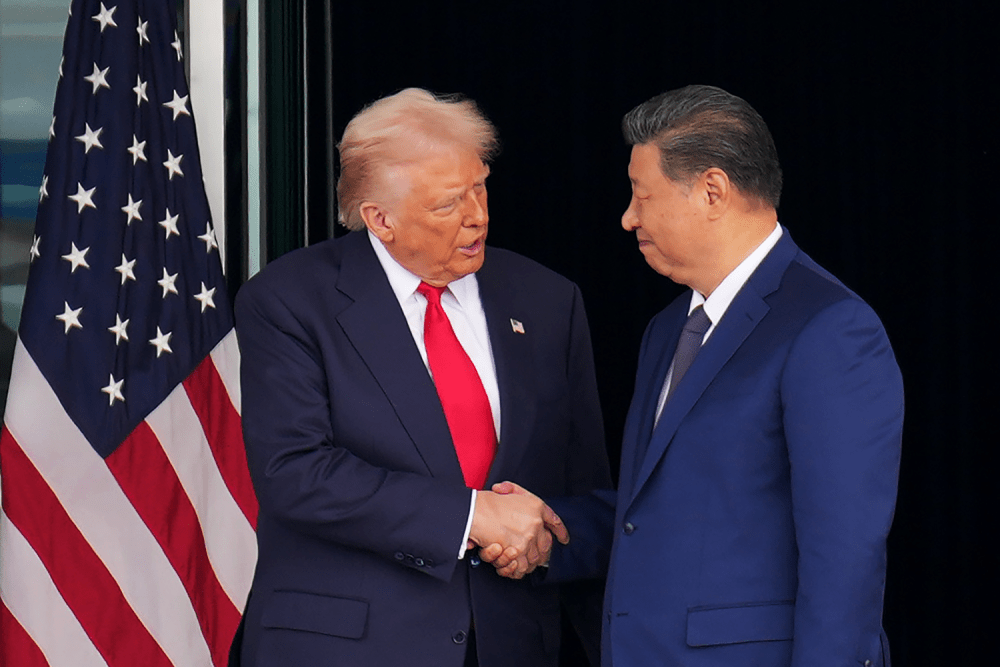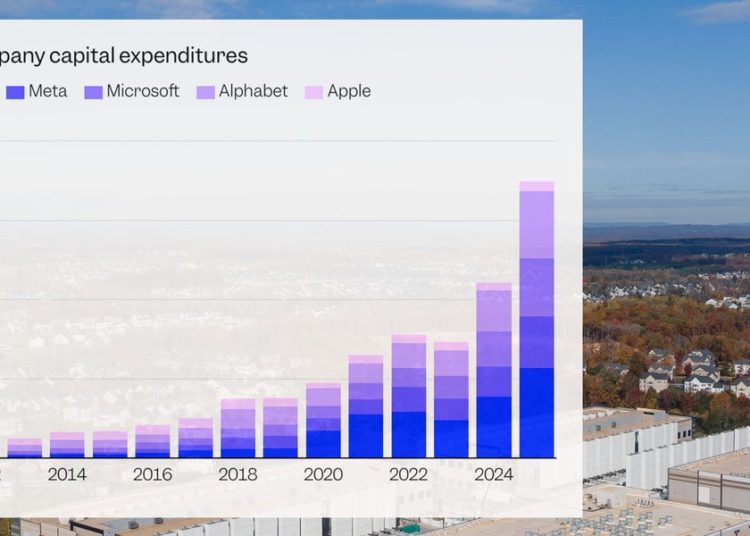China and the United States have agreed on a yearlong truce in their trade war—but it’s essentially a handshake between Presidents Donald Trump and Xi Jinping, not an actual agreement. The two leaders met on Thursday in Busan, South Korea, with Trump backing down on his threat from two weeks ago to raise tariffs by an additional 100 percent and instead lowering the average duty from 57 percent to 47 percent.
In return, Beijing has agreed to once more purchase U.S. soybeans and to refrain from imposing further rare-earth controls for a year. Both sides have backed off from a tit-for-tat exchange over port fees that could have slashed global maritime traffic. By Trump’s own admission, Taiwan was not even discussed.
Details remain fuzzy—and reversible. While Trump made some larger claims, such as Beijing agreeing to buy farm equipment and Alaskan gas and oil, the Chinese statements have been far more cautious. Compare this week’s news to the “phase one” trade deal signed between the two powers in January 2020. While the bulk of that agreement never materialized, thanks in large part to the COVID-19 pandemic, it was a moderately detailed arrangement complete with clear demands, mechanisms, and timelines for implementation—the sort of thing that’s hashed out in long negotiations many months in advance.
The timeline here simply didn’t allow for that; while the two sides have been talking since their May meetings in Switzerland, Trump’s outburst over rare earths, where he accused China of “becoming very hostile,” came barely three weeks ago. That’s left the situation much longer on vague promises than specifics—with much of those promises on already well-trodden topics such as fentanyl, where China’s actions to curb the export of precursor materials over the past decade haven’t stopped complaints from Washington.
China hawks in Washington seem to have been successful, for now, in causing Trump to hold back on allowing the export of a powerful Nvidia-made semiconductor chip, the B30A, to Beijing. The artificial intelligence race is a rare case where China still needs what the United States is selling, rather than vice versa, and the B30A is far ahead of the stripped-down chips currently allowed to be sold. But Nvidia chief Jensen Huang is lobbying Trump for more charitable rules, and the possibility of the chip being exported isn’t off the table altogether.
One of the few actual numbers provided so far pertains to soybeans, where China has promised, according to U.S. Treasury Secretary Scott Bessent, to buy 12 million tons in the next few months and another 25 million tons every year for the next three years—about the same numbers as in the past two years. Bessent claimed that this took the threat to “our great soybean farmers” off the table.
That seems Pollyannaish: Mostly, what the deal has done is highlighted for Beijing that this is a political pressure point that it can keep squeezing the United States on when it wants something done. Beijing is also aware that it has plenty of South American suppliers eager and willing to undercut U.S. farmers.
The optimistic take from the long-awaited first Trump-Xi meeting for six years is that their summit now allows their respective delegates to sit down for the lengthy and grueling talks that would be necessary for a lasting, written agreement. That’s the reverse of the usual process, where the glitzy summit is a final stamp on a deal.
But it plays to what Trump seems to want out of these high-level gatherings, which is to cosplay as a statesman and be praised by others without bothering about the details. The Japanese and Koreans both understood the assignment here in their meetings with Trump earlier in the week, but it’s also an indicator of how the U.S-China power dynamic has shifted toward Beijing. Trump was full of praise for Xi, grading the meeting “12 out of 10” and calling it a “great honor.” Chinese language was far more muted.
Pessimistically, the vagueness of the deal means that, as I wrote earlier this week, it will only last until something triggers Trump’s temper—or until one of the numerous other points of friction in the relationship causes a clash. Think of it more like a temporary cease-fire in a long-running war than a peace deal—one that could fall apart at any moment.
For now, the United States is more dependent on Chinese goodwill than vice versa, especially when it comes to rare earths, an area where China has a monopoly, especially when it comes to processing. Trump’s only real tool is turning the tariff dial—and Chinese manufacturers have been surprisingly able to find other markets to replace the United States.
The United States lacks the state capacity needed to fix its structural dependencies on China. Rare earths, for instance, have been a known weakness for more than a decade, and despite constant talk about them in Washington, little has changed. Government action generally requires having a government that is open for business.
The post Trump and Xi Step Back From the Brink—for Now appeared first on Foreign Policy.




